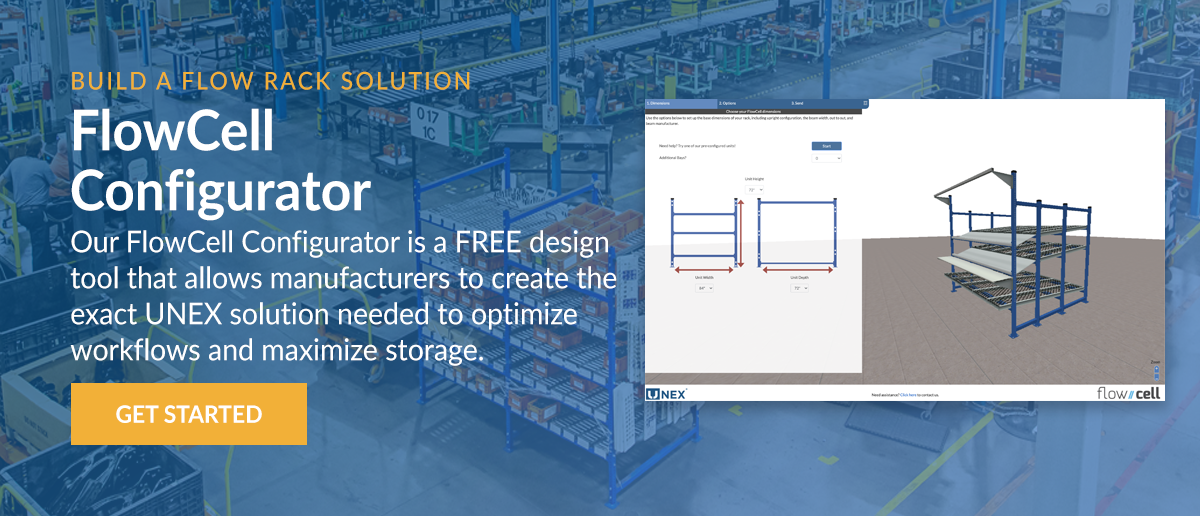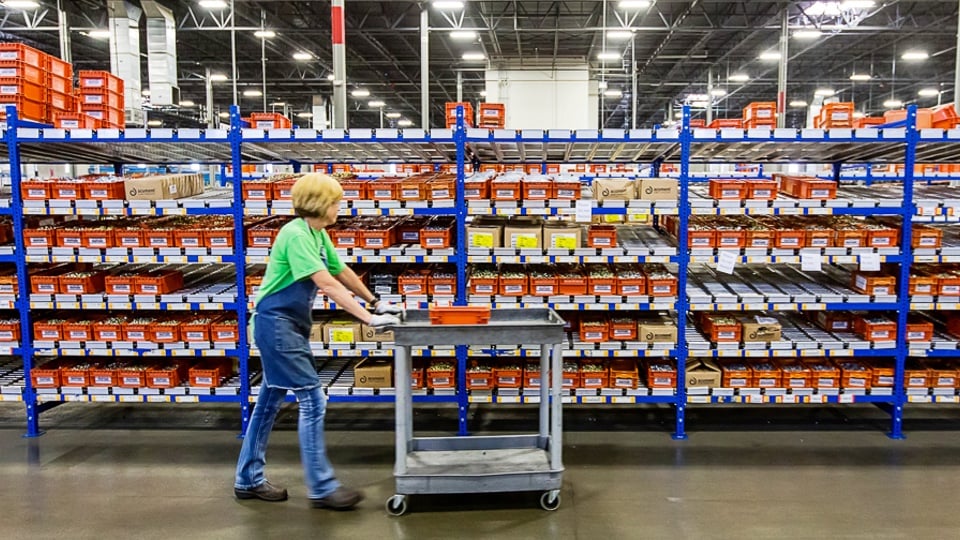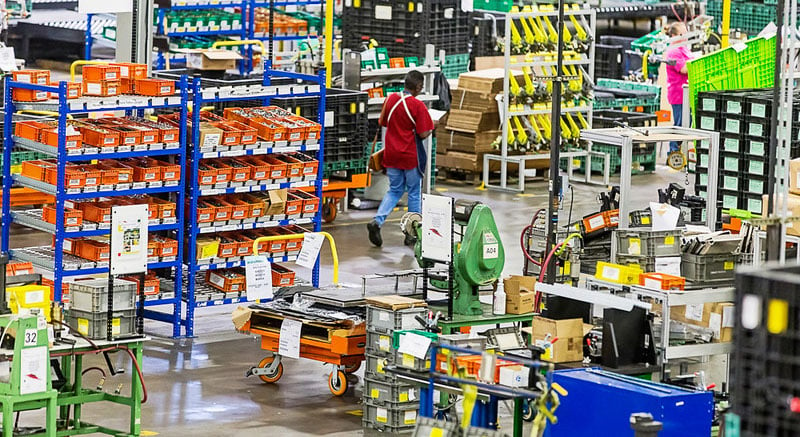Optimizing Lineside Storage
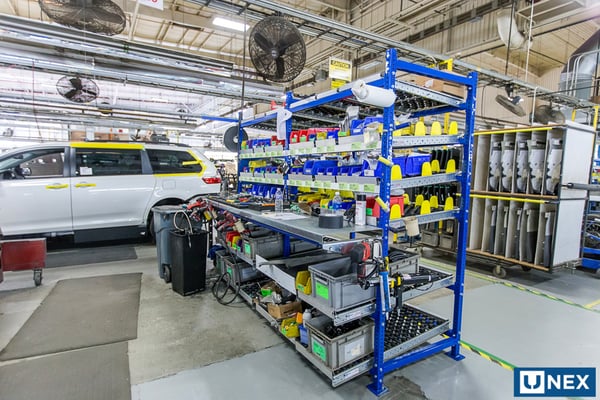
There’s a reason Six Sigma and Lean Manufacturing are such popular terms within the manufacturing community. They're proven to be incredibly effective time and money savers. However, as customers have grown accustomed to tailoring anything and everything to their exact specifications, manufacturers face difficult space and efficiency challenges.
Take the automotive industry, for example. Think about how many options you have when buying a new car. Do you want your center console to be black, gray, wood-trimmed, leather, or anything else your heart desires? Forty years ago, your only color options were black or black. Now you can choose from aurora or ebony black as well as silver, blue, cherry, bronze, graphite, red, and a host of other colors. So, how does a manufacturer adapt to this customizable world? Unless they’re blessed with unlimited space for pallets and money for overhead, chances are they’re a just-in-time manufacturer working with genuine space requirements.
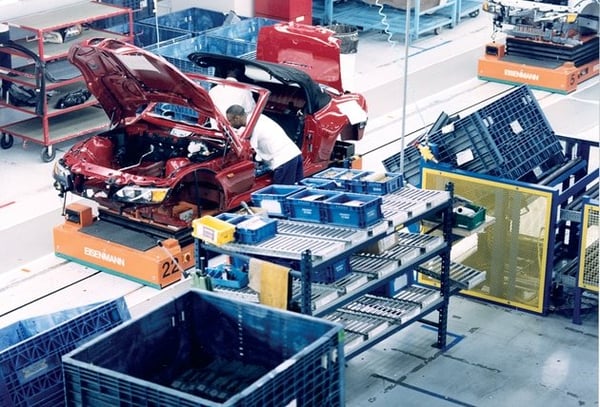
Efficient material handling and storage processes are essential for minimizing downtime, reducing costs, and improving productivity. One critical aspect of this is lineside storage— storing materials and components near the production line so they’re easy to access and can be rapidly replenished. This article will explore the six steps to optimize lineside storage to increase efficiency and reduce costs.
1. Assess Your Storage Practices
Before optimizing your lineside storage, you need to understand your current practices. Take a close look at your inventory levels and storage area layout with the following questions in mind:
-
How well are materials and components organized? Disorganization can lead to lost or misplaced items, creating inefficiency and unnecessary costs for your operation.
-
Is it difficult or time-consuming to access stored materials and components?
-
Do you have enough storage space to meet your current and future needs?
-
Is your operation using all the materials and components it stores?
By examining these areas, you can identify where you can improve your lineside storage process.
2. Follow Just-In-Time Manufacturing Principles.
You can optimize inventory management by using just-in-time manufacturing principles. Ensure components are scheduled to arrive at lineside when needed for assembly, eliminating items that won’t be needed until later. Organizing material by item type, size, and usage frequency helps ensure components are easily accessible and maintain efficient stock rotation. Inventory organization reduces storage cost, replenishment time, and the amount of material that needs to be managed lineside.
Learn lean manufacturing storage principles. Download the Lean Manufacturing Storage Guidebook!
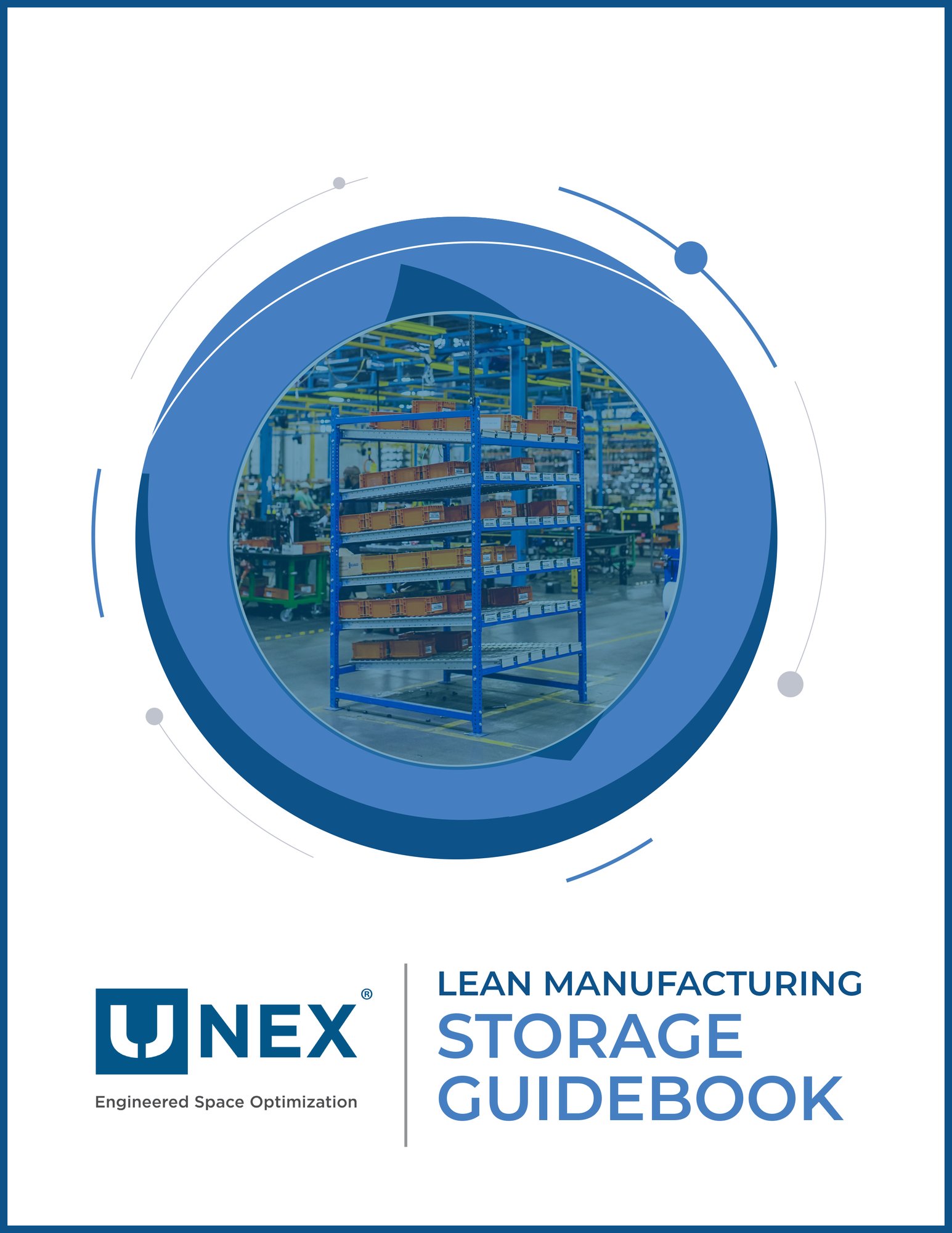
3. Use Vertical Space.
Making efficient use of vertical space can be a game-changer. High-density storage solutions like vertical racks and pick shelves allow you to store and easily access more materials while using less space. This leaves you with more floor space for manufacturing and can also cut labor costs by reducing the time employees can access needed materials.
4. Implement a FIFO System
A FIFO (First-In, First-Out) system is a cost-effective and efficient method for managing inventory in a lineside storage area. By ensuring that the oldest inventory is used first, FIFO helps reduce waste and avoid obsolescence. Implementing a FIFO system can be done by organizing inventory by expiration or production date, marking inventory with a batch or lot number, or by using an automated tracking system. FIFO systems can be used in various industries, from manufacturing to food service, and can help increase efficiency while reducing costs. By optimizing lineside storage with a FIFO system, businesses can improve their bottom line and ensure their operations run smoothly.
5. Use Real-Time Data.
Using real-time consumer data to inform inventory management helps you optimize lineside storage by allowing you to align inventory with actual demand. This information lets you quickly identify when materials need to be replenished, so you can reduce downtime and enhance productivity. It can also help you identify slow-moving or obsolete materials, allowing you to adjust your inventory levels accordingly.
6. Monitor and Adjust.
As you implement changes in your lineside storage, monitoring and adjusting your practices as needed is essential. Conduct regular reviews of your inventory levels and the performance of your storage solutions, and solicit feedback from workers on the production line. Employees who work directly with lineside storage daily can provide valuable insights into what works well and what needs improvement. You can optimize your lineside storage by continuously monitoring and adjusting your storage practices.
Optimizing lineside storage can reduce costs, improve productivity, and maximize space in your facility. Implementing UNEX flow racks will allow you to store more SKUs in your existing footprint. Discover space-saving UNEX solutions for lineside storage.

